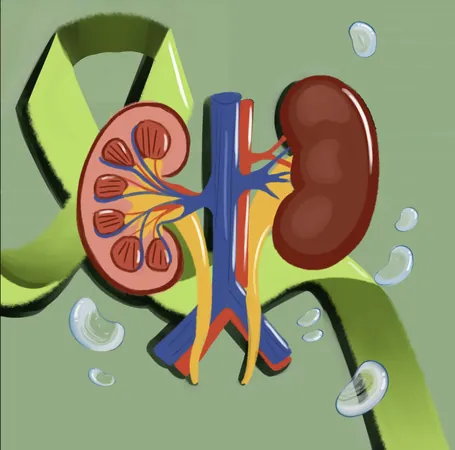
Rising Star in Exoplanet Research Set to Revolutionize Planet-Hunting Technology at UH
2025-03-31
Author: Sarah
A groundbreaking addition is coming to the University of Hawaiʻi (UH) Institute for Astronomy (IfA) as Nour Skaf, an acclaimed scientist in extrasolar planet research, joins the team. Recognized as one of the eight prestigious 51 Pegasi b Fellows by the Heising-Simons Foundation, Skaf’s expertise in exoplanet instrumentation is expected to elevate UH’s planet-hunting capabilities significantly.
Skaf aims to tackle the challenges posed by optical distortions that blur astronomical images of distant exoplanets. By enhancing the observations from the world's leading telescopes located on Maunakea, her work promises to push the boundaries of our understanding of celestial bodies beyond our solar system. “My goal as a scientist is to be able to image and characterize planets closer to their stars and, specifically with the next generation of telescopes, image and characterize Earth-like planets around nearby stars,” Skaf stated, highlighting her ambitions for the future of astronomical research.
Dr. Skaf holds a PhD from the Observatoire de Paris, where she made significant contributions to the development of DrWHO—an innovative software algorithm designed to minimize optical disturbances that compromise ground-based astronomical observations. This technology focuses on improving the direct imaging of exoplanets.
A primary project for Skaf during her fellowship will involve refining the DrWHO algorithm and introducing a novel mapping technique to account for the rapid flickering of stellar images due to atmospheric turbulence. This new approach will facilitate real-time corrections, enhancing the clarity and precision of observations, further bridging the gap between Earth-based telescopes and the mysteries of the universe.
Collaborating closely with IfA scientists, Skaf will work alongside a research team led by astronomer Michael Bottom. Recently awarded a $4 million grant from NASA, Bottom's team is developing next-generation ultra-sensitive sensors that are critical for observing distant planets and their atmospheres. "Nour has done first-rate work on adaptive optics algorithms, which we’ll implement on some of the most powerful telescopes in the world, right here in Hawaiʻi," Bottom remarked. "This collaboration will benefit many astronomers pursuing diverse scientific inquiries, and we’re thrilled to welcome her to our community."
As a member of the Heising-Simons Foundation’s new cohort of 51 Pegasi b Fellows, Skaf represents a wave of early-career scientists dedicated to advancing human understanding of exoplanets, planet formation, and atmospheric science. Her fellowship, funded by a generous $450,000 grant, spans three years, during which she is expected to make remarkable contributions to the field.
This exciting development at UH not only marks a significant milestone in exoplanet research but also reinforces Hawaiʻi's role as a nexus for innovative scientific exploration and discovery in astronomy. Could this be the breakthrough that leads to the discovery of a new Earth-like planet? Stay tuned as Nour Skaf embarks on this transformational journey in the quest for distant worlds!



 Brasil (PT)
Brasil (PT)
 Canada (EN)
Canada (EN)
 Chile (ES)
Chile (ES)
 Česko (CS)
Česko (CS)
 대한민국 (KO)
대한민국 (KO)
 España (ES)
España (ES)
 France (FR)
France (FR)
 Hong Kong (EN)
Hong Kong (EN)
 Italia (IT)
Italia (IT)
 日本 (JA)
日本 (JA)
 Magyarország (HU)
Magyarország (HU)
 Norge (NO)
Norge (NO)
 Polska (PL)
Polska (PL)
 Schweiz (DE)
Schweiz (DE)
 Singapore (EN)
Singapore (EN)
 Sverige (SV)
Sverige (SV)
 Suomi (FI)
Suomi (FI)
 Türkiye (TR)
Türkiye (TR)
 الإمارات العربية المتحدة (AR)
الإمارات العربية المتحدة (AR)